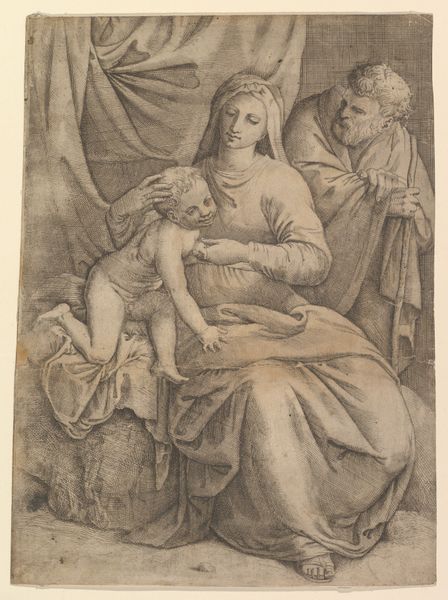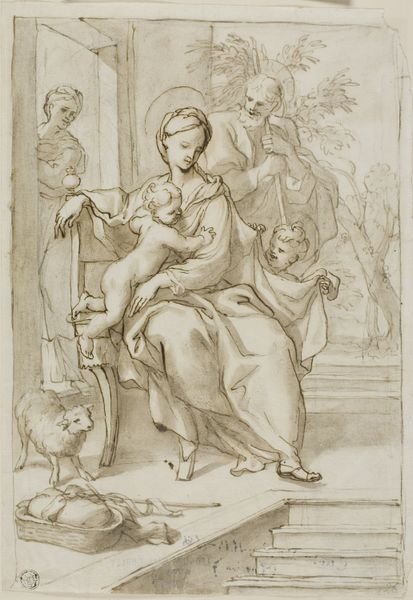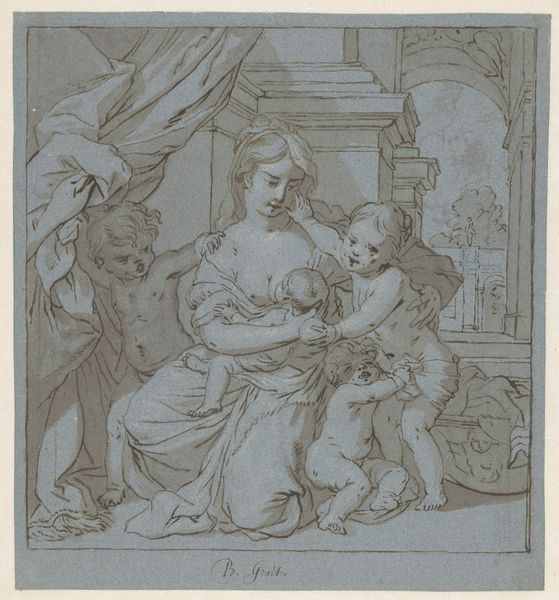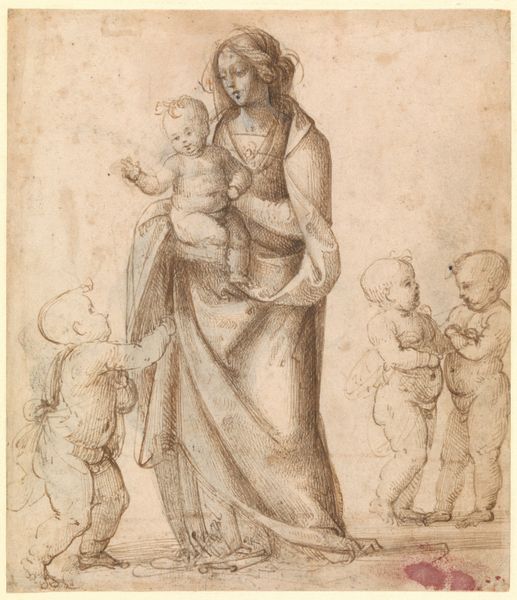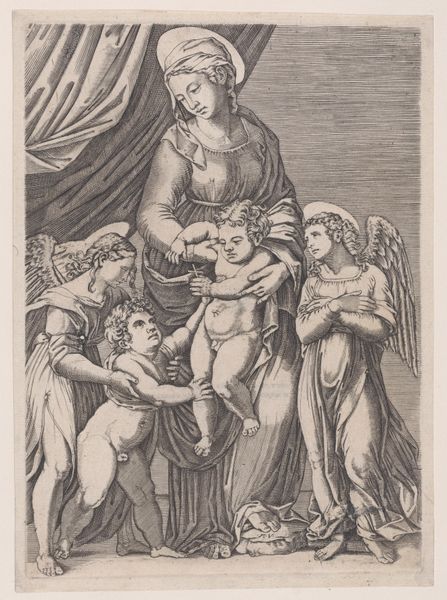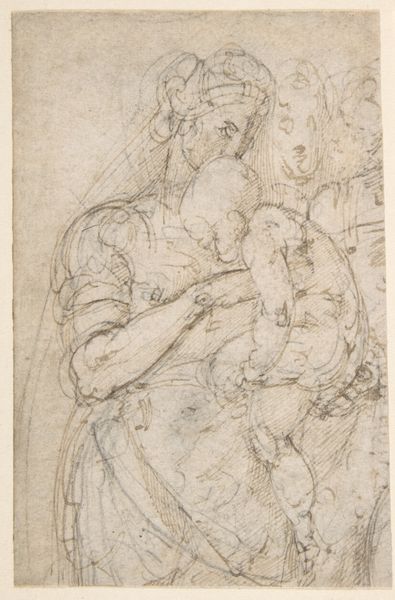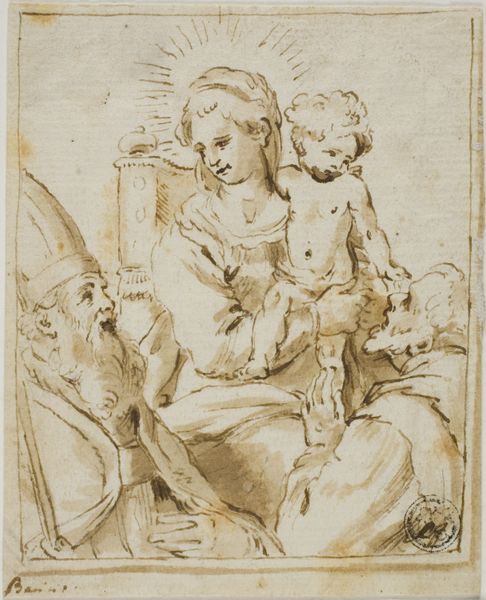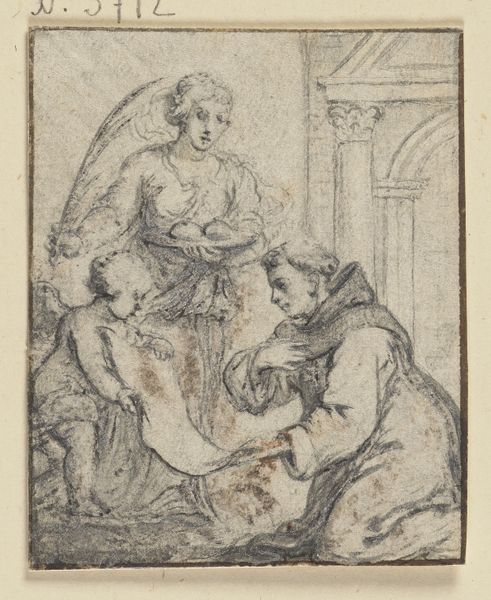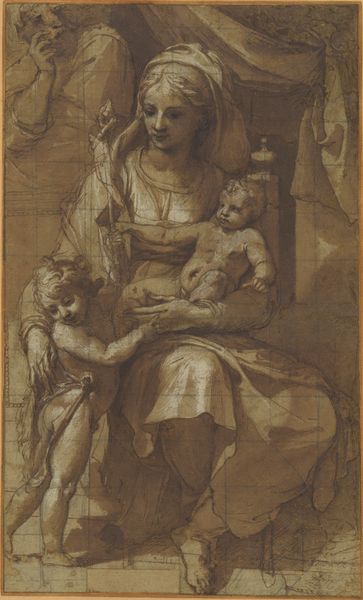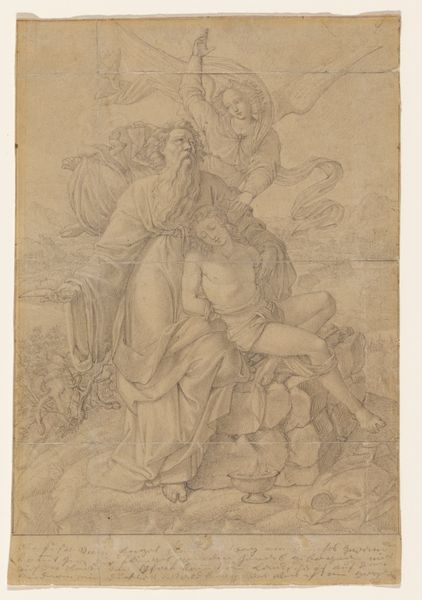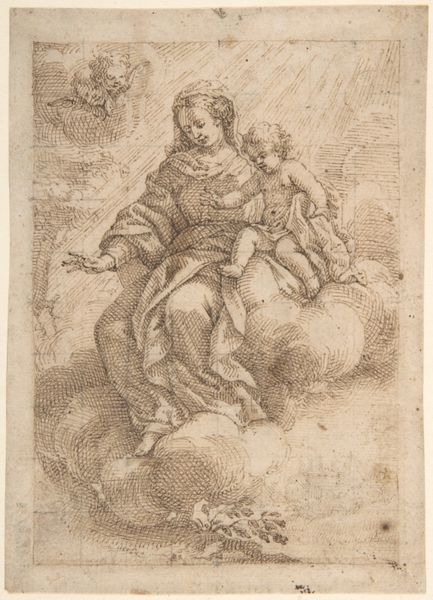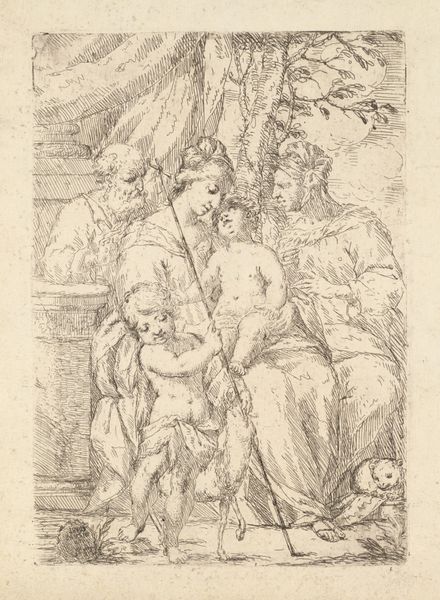
Virgin and Child with the Infant John the Baptist 1540 - 1556
0:00
0:00
drawing, print, etching, paper, ink
#
portrait
#
drawing
#
narrative-art
# print
#
etching
#
pencil sketch
#
etching
#
figuration
#
paper
#
ink
#
history-painting
#
italian-renaissance
Dimensions: 170 × 134 mm
Copyright: Public Domain
Curator: This is Luca Penni’s “Virgin and Child with the Infant John the Baptist,” a print executed in ink on paper sometime between 1540 and 1556, during the Italian Renaissance. Editor: It’s interesting that you call it a "print" – it has such an intimate feeling, like a preparatory sketch. I’m struck by the almost melancholy tenderness of the scene, particularly in the Virgin’s downward gaze. Curator: That’s a perceptive reading. The Renaissance saw an incredible circulation of images; printmaking allowed artists to disseminate their ideas widely. And it is interesting how Penni uses line to convey emotion; the hatching and cross-hatching builds a real sense of depth and gravity. The expressions are rendered with such soft detail. It also points to broader market. Editor: The arrangement of the figures—the Virgin at the center, the two children flanking her—evokes earlier works by masters such as Raphael. Is Penni positioning himself within that tradition, paying homage perhaps? The almost decorative addition of the column and draped fabric as background gives it the classic flavor, doesn’t it? Curator: Absolutely. The composition aligns with the established visual language for representing the Madonna and Child, a reflection of the socio-religious context and artistic patronage system in place during the 16th century. And consider the figures of John the Baptist and Jesus as children, together a potent foreshadowing of sacrifice and the divine plan. Editor: But that sense of foreboding… doesn't it challenge our modern expectations of depictions of the Madonna? We are used to expressions of pure, perhaps naive, joy in these sorts of pictures. It also makes one wonder about how contemporary audiences reacted to this type of imagery. Did they share this pensive interpretation? Curator: Renaissance viewers were highly attuned to visual symbols. A mother’s somber expression or gesture, for instance, were cues within their visual language, sparking recognition, contemplation, and devotion. It wasn’t merely about surface beauty; it was about unlocking deeper spiritual truths through these figures. Editor: The dialogue between art, society, and belief really comes to life in an image like this one. So much to contemplate... Curator: Indeed. An intricate drawing like this connects us to artistic traditions, to devotional practice, to social values and personal expression—a lens on how people created, looked, and felt about images so many years ago.
Comments
No comments
Be the first to comment and join the conversation on the ultimate creative platform.
